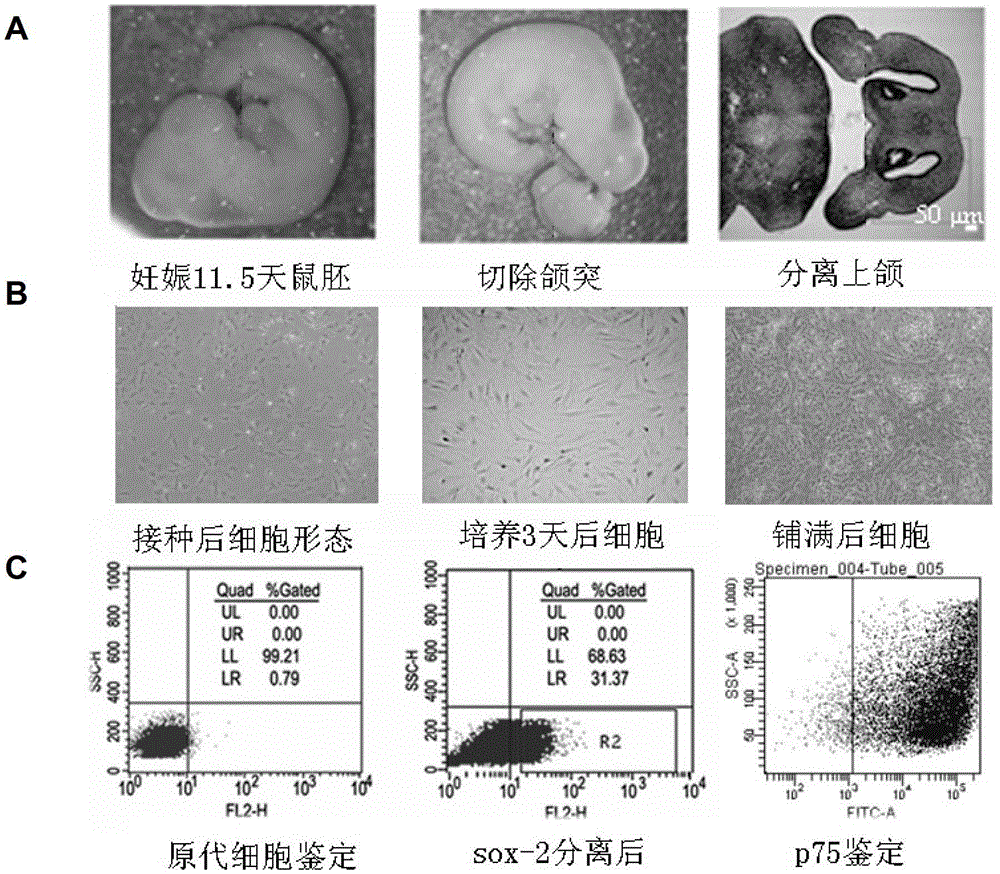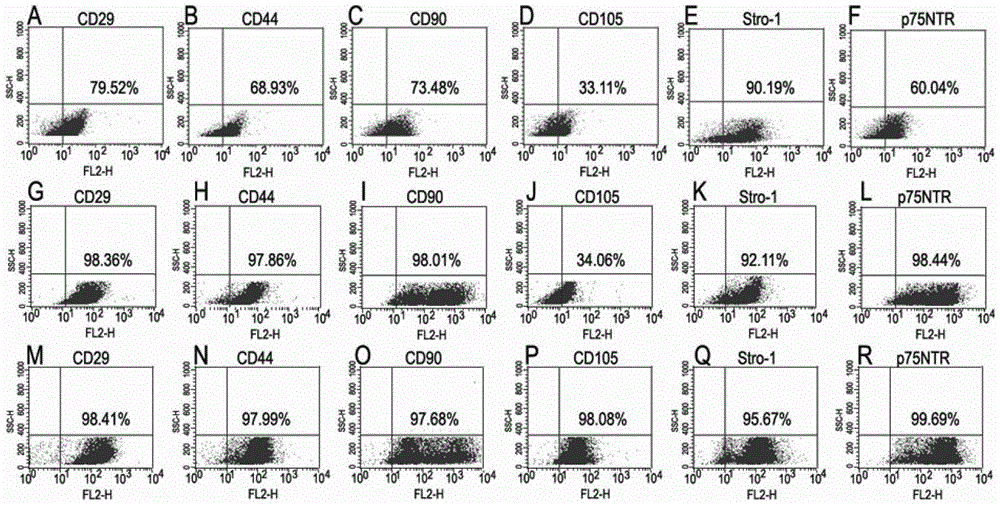Cultural method of crest-derived stem cell of cranial nerve and identification method
A culture method and stem cell technology, applied in the field of purification and identification, and the cultivation of cranial neural crest-derived stem cells, can solve the practical application of complicated cell acquisition operations, unproven neural crest-derived cells, and isolation and purification of neural crest-derived cells Difficulties and other problems, to achieve the effect of stable cell phenotype, no cell proliferation activity, good growth activity and proliferation potential
- Summary
- Abstract
- Description
- Claims
- Application Information
AI Technical Summary
Problems solved by technology
Method used
Image
Examples
Embodiment 1
[0039] Isolation and purification of sox-2+ cranial neural crest-derived stem cells
[0040] The 11.5-day pregnant SD mice were taken out, killed by dislocation of the neck, soaked in alcohol for 15 minutes, and the embryos were dissected under the ultra-clean table and the mandibular process tissues were excised (see figure 1 -A), rinse with 0.01MPBS, cut the tissue pieces as much as possible, add 0.25% trypsin / 0.1mM EDTA to digest for 5-10 minutes, neutralize with an equal volume of DMEM / F12 medium, gently pipette the discrete cell factor pieces, and put A single cell suspension formed. Filter through a cell sieve with a pore size of 70 μm, centrifuge at 800 r / min for 5 minutes, remove the supernatant, then add 0.01 MPBS solution to resuspend the cells and centrifuge again, repeat this process twice. Collect cells at 1 x 10 5 Inoculate at a density of 50ml into a 50ml culture bottle, and the culture medium is DMEM / F12 (100μg / ml streptomycin and 100U / ml penicillin) medium c...
Embodiment 2
[0043] Phenotypic characterization of sox-2+ cranial neural crest-derived stem cells
[0044] The 3rd generation cells after sorting and the 9th generation cells cultured in vitro sox-2+ cranial neural crest derived stem cells were taken at a rate of 1×10 4 Each well was seeded in a 24-well plate, and each group had three replicate wells. One group was taken every day, digested with 0.25% trypsin, counted, for a total of 9 days, and the growth curve was drawn. The cell population doubling time was calculated as TD=txlog2 / (logNt-logNO), where t was the number of days of cell growth, Nt was the number of cells on day t, and NO was the number of cells inoculated. The culture has the following common characteristics: the cells have good proliferative activity, and the cells are fully stretched on the second day, maintaining a spindle-shaped cell shape; on the 7th to 8th day, they are basically confluent and reach the peak of the growth curve. The population doubling times of sox...
Embodiment 3
[0049] Multilineage differentiation potential of sox-2+ cranial neural crest-derived stem cells
PUM
 Login to View More
Login to View More Abstract
Description
Claims
Application Information
 Login to View More
Login to View More - R&D
- Intellectual Property
- Life Sciences
- Materials
- Tech Scout
- Unparalleled Data Quality
- Higher Quality Content
- 60% Fewer Hallucinations
Browse by: Latest US Patents, China's latest patents, Technical Efficacy Thesaurus, Application Domain, Technology Topic, Popular Technical Reports.
© 2025 PatSnap. All rights reserved.Legal|Privacy policy|Modern Slavery Act Transparency Statement|Sitemap|About US| Contact US: help@patsnap.com



